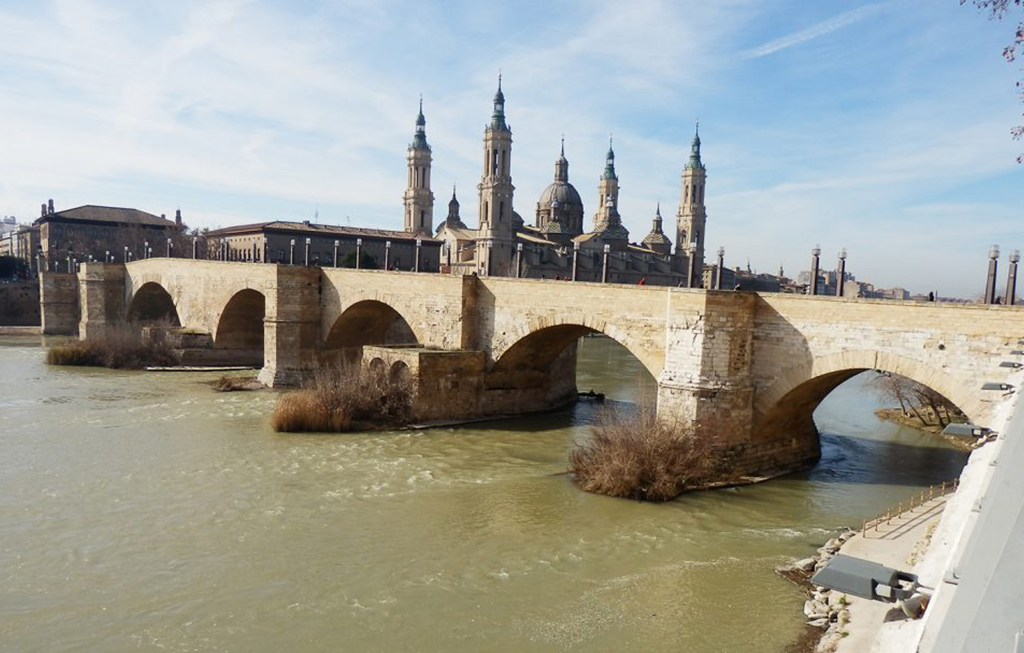Discover 10 Things to Do If You Visit Zaragoza
Unveiling the Wonders of Zaragoza
The Aragonese capital hides endless attractions that captivate anyone who ventures to explore it. Its centuries-old streets conceal stories from past eras, while the more contemporary venues add a modern touch to the city.
Zaragoza invites travelers to get lost in its streets to taste and discover the culinary heritage that every traditional dish recalls.
Besides boasting rich gastronomy, it is home to countless emblematic monuments and magical corners ready to be experienced and visited.
No matter how long the visit to Zaragoza lasts, the capital has some must-see spots essential for soaking up its essence and reaching the heart of the city.
That’s why, in this blog, we want to give you the 10 most characteristic sites you must visit upon arriving in the Zaragozan capital.
The local culture, which blends the past and the present, can be felt in every corner. From the historical relics whispering ancient tales to fantastic views that linger in memory.
Moreover, for food lovers, nothing compares to the bar crawl, tasting the best tapas Zaragoza has reserved for tourists and locals alike. Don’t miss it!
Explore the rich culinary heritage by discovering the top Food Dishes in Zaragoza that every visitor should try.
Being enveloped by the charms of Zaragoza is more than visiting; it’s experiencing, living, and enjoying each of its nuances. Get ready to be swept away by the very essence of Aragon, where every street, square, and building holds stories and secrets you must discover and learn.
Zaragoza is not just a destination; it’s an experience that enriches the soul of those who venture to know it. Do you want to discover it with us? Keep reading this post about the 10 things you must see and do if you visit Zaragoza. Stay tuned!
Visit the Basilica of Our Lady of the Pilar in Zaragoza
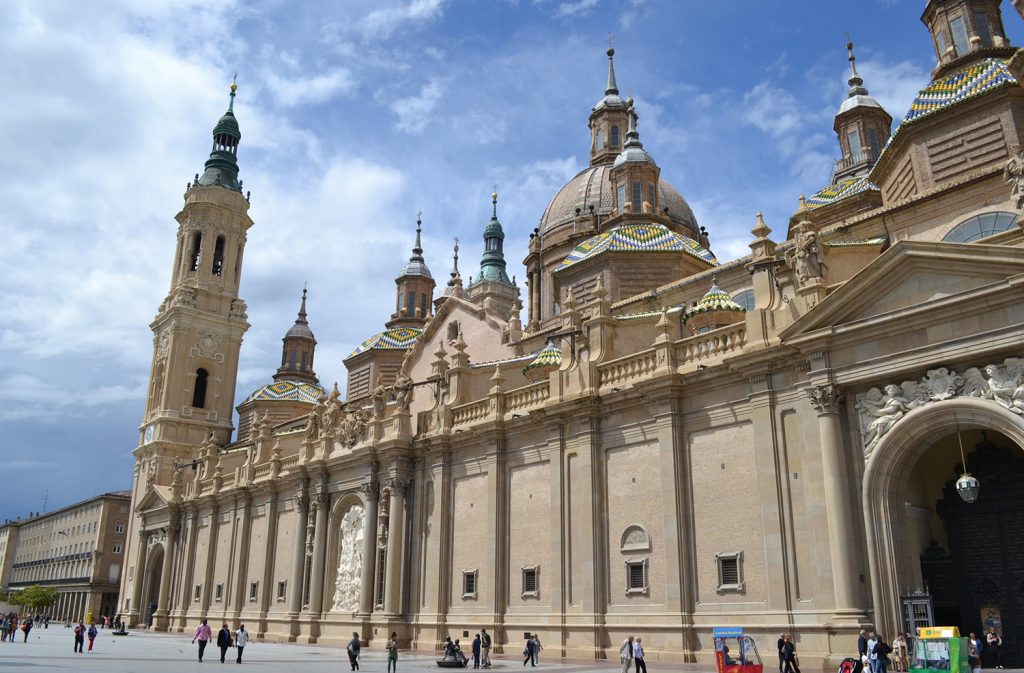
The majestic Basilica of Our Lady of the Pilar in Zaragoza stands imposingly on the banks of the Ebro River, being a prominent Baroque exponent and an emblematic symbol of the city and all Zaragozans.
Its slender towers have proudly risen towards the sky for centuries, although its architectural evolution over the years has been notable.
Originally, it was a modest Romanesque church that began construction in the 13th century, but its last tower was not erected until the middle of the last century, shaping the appearance we admire today.
Discover the best bars for tapas in the famous Tubo in Zaragoza, a must-visit area for food enthusiasts.
If you wish to see this revered site from above, you can take its panoramic elevator, which ascends 65 meters to the roof of the San Francisco de Borja Tower, from where you can enjoy fabulous views of the city.
The more daring can climb a few more meters up its spiral staircase.
Take advantage of the visit to tour the interior and exterior of the basilica, noting the damages that still persist from the civil war on its walls. Here we tell you a little more about it so you can get to know it. Stay tuned!
Origin of the Basilica: History and Significance
According to tradition, the Virgin Mary appeared on a jasper pilar to the apostle James the Greater at this place, giving origin to her cult in the Iberian Peninsula and the current basilica built on the site of the apparition.
Since then, this site has become a point of pilgrimage and devotion, whose successive reconstructions and reforms throughout the centuries reflect the faith and art of each era.
The Basilica receives millions of visits a year and has become a place of reference for devotees and non-devotees alike.
Experience the Impressive Architecture of the Basilica
Just approaching the majestic Basilica, its huge domes decorated with eye-catching blue and gold tiles dominate the horizon.
However, it is inside where the true architectural beauty is appreciated, from the central nave guarded by tall columns to the side chapels filled with artistic details that surprise those who visit for the fir time.
Discover the Holy Chapel
Inside, the Holy Chapel stands out, reverently housing the image of the Virgin of the Pilar.
This chapel, small in size but the most spectacular, is in itself a masterpiece, with Gothic, Renaissance, and Baroque elements coexisting in sacred harmony that is essential to see within the itinerary.
Artworks of the Basilica of the Pilar
The Basilica of the Pilar is not only a site for prayer but has also become a living museum of religious art through the centuries.
Goya’s paintings on the choir vault stand out, some of his first commissions as an artist, as well as numerous chapels adorned with altarpieces, sculptures, and paintings that deal with the theme of faith.
The Towers and the Museum of the Pilar of Zaragoza
From the top of the towers, especially the Pilar, you can enjoy incredible views of all Zaragoza.
Additionally, the Museum of the Pilar contains a collection of liturgical objects, such as veils of the Virgin and other effects related to the sacred history of the temple that you can visit and contemplate to complete your visit.
Traditions and Festivities of the Pilar of Zaragoza
The Pilar is the heart of Zaragozan traditions, especially during the festivals that bear this same name in October. During these dates, the city dresses up with music and devotion, and it is in this very festival when the famous Offering of Flowers is made and celebrated.
In it, thousands of people in regional costumes offer flowers to the Virgin. You can’t miss it!
The Best Tips for Your Next Visit to the Basilica of the Pilar
To visit and get to know the Basilica of the Pilar of Zaragoza, you should plan the tour in advance. Here we give you some recommendations to keep in mind if you visit:
- You should consider the mass schedules to experience the spiritual aspect of the place, or to quietly contemplate its magnificent architecture.
- Before heading to the iconic Sanctuary of Our Lady of the Pilar, make sure to check the available schedules on the website or at the local tourist office, which will allow you to organize your itinerary to fully enjoy the facilities without crowds and peacefully.
- Remember that this is a sacred site. Dress appropriately for the occasion, avoiding outfits that may be offensive. It’s important to remember that it’s a place of faith visited by many devotees.
- From the top of the towers, you will appreciate the impressive views of the monumental complex, the old town, and the Ebro River.
- Don’t miss the opportunity to delve into the history of the place by visiting the annex Museum of the Pilar. Its collection helps to understand and complete the cultural context that framed the construction of this heritage symbol.
- Explore the surroundings. The area near the Basilica, including Plaza del Pilar, is bustling with activity and is perfect for a stroll to get to know the city better.
- In addition, you will find numerous cafes and shops selling souvenirs and local products. You can walk through streets full of history where you can discover hidden corners.
- Take photographs respectfully and without disturbing others. Although it’s tempting to capture the beauty of the Basilica with your camera or mobile, remember to do so respectfully, especially during masses or if there are faithful praying. Consider that for others, this may be a private and intimate moment.
- Consider the possibility of taking a guided tour to make the most of the experience. Guides will provide you with details and anecdotes that will enrich your visit to the Basilica and its historical significance. Asking them questions will help you better understand the unique devotion it awakens.
- Even if your visit has a tourist purpose, take the opportunity to sit quietly and reflect. The atmosphere of peace and spirituality of the Basilica is an experience in itself that invites contemplation. Let your thoughts flow freely.
Buy a Ribbon of Our Lady of the Pilar

Purchasing or acquiring a ribbon at the Catedral de la basílica de Nuestra señora del Pilar has become a deeply rooted tradition and a symbolic gesture of faith and devotion in the city of Zaragoza.
These ribbons, representing a tangible connection to the Virgin and faith, are measured to the same length as the figure of the Virgin of the Pilar, offering the faithful and visitors a unique way to carry a piece of this sacred place wherever they go.
One of the best souvenirs you can take from the city is precisely one of these ribbons. In fact, receiving a ribbon as a gift, especially if it is from someone from Zaragoza, is considered even more special as it symbolizes the affection and fondness one has for someone special.
Giving a ribbon of the Pilar has become a practice that invites reflection on the uniqueness of the Virgin of the Pilar, whose representation, despite the magnitude of the Basilica that houses it, is surprisingly modest in size.
During your stay in Zaragoza, you will notice that these ribbons adorn numerous personal objects and spaces, from car rearview mirrors to people’s wrists, symbolizing the widespread devotion that the city professes towards its patron saint.
This tradition not only reflects faith but also the culture and affection of Zaragozans for their Virgin.
If you decide to take this emblematic souvenir with you, you will find that in the Basilica and its surroundings there is a varied selection of ribbons available in multiple colors, allowing you to choose the one you like the most.
Make This Ritual a Tradition
Buying a ribbon of Our Lady of the Pilar is not just a way to honor a centuries-old tradition; it’s also taking a piece of Zaragoza’s spiritual essence with you.
This symbolic act, whether a self-gift or a present from someone special, enriches any visit, providing a deeper connection with the history, faith, and local culture.
We invite you to become part of this beautiful tradition, which will allow you to carry a piece of Zaragoza with you wherever you go, reminding you of the beauty and spirituality of a city that welcomes all its visitors with open arms.
Now, we will talk about another related and very close building, The Cathedral of the Savior of Zaragoza (La Seo), which rises with dignity in the center of Zaragoza, offering a fascinating and complementary contrast to the nearby Basilica of Our Lady of the Pilar.
This building is not only an impressive monument for its architecture but also a living testimony to the history and artistic evolution of the city.
Visit the Cathedral of the Savior of Zaragoza (La Seo)
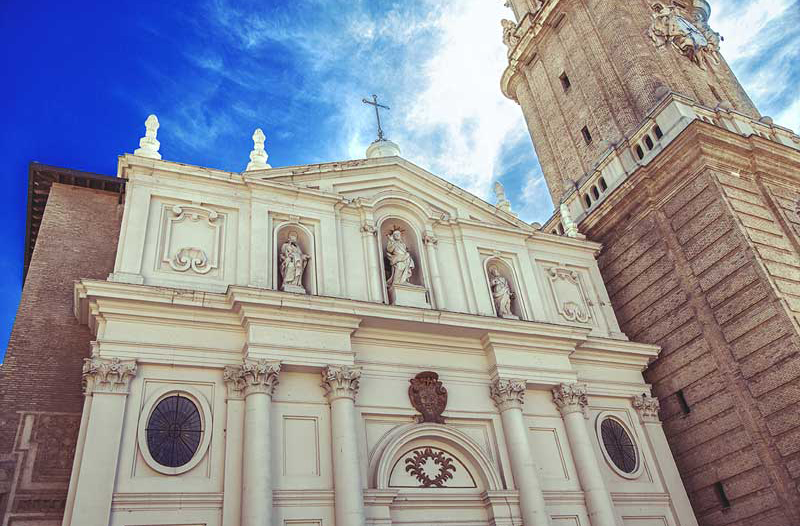
The majestic building of La Seo stands as a legacy of history through the styles that have shaped it over the years.
From its Romanesque roots in the 12th century, this iconic building has witnessed transformations incorporating artistic elements from Mudéjar, Gothic, Renaissance, and finally Baroque styles, as seen in its imposing XVIII century bell tower.
Each era has left its cultural and artistic mark, making La Seo a place where artistic and cultural expressions from different times converge.
Discovering the Wonders Hidden Inside La Seo in Zaragoza
The Main Altarpiece
One of the treasures housed in La Seo is an impressive Main Altarpiece, a Gothic masterpiece that narrates scenes from the life and miracles of Christ and His Mother.
The meticulousness of its details and the perfection of its creation have made it an object of admiration and study. You can’t miss it!
The Chapel of San Bernardo
Also significant is the Chapel of San Bernardo, which houses the tomb of Archbishop Lope Fernández de Luna, a masterpiece of Spanish medieval funerary art.
Its reliefs are laden with complex symbolism and spirituality, making them an aesthetic relic of the era.
The Tapestry Museum
Likewise, La Seo in Zaragoza boasts one of the most notable tapestry collections in Europe.
The museum has a collection that spans from the XV to the XVIII century, with works of extraordinary historical and artistic value that describe everything from biblical stories to artistic and geometric compositions influenced by Islamic culture.
Practical Tips for Visiting La Seo in Zaragoza
Those planning to visit the impressive work of La Seo should allocate enough time to appreciate the vast wealth of its interior and the details of its architecture.
While the exterior is breathtaking, it is the treasures stored inside that truly reveal the historical and cultural significance of this cathedral.
Additionally, consider joining a guided tour to gain a deeper understanding of its history, art, and anecdotes that make La Seo a unique place in Zaragoza.
Take a Picture on the Stone Bridge
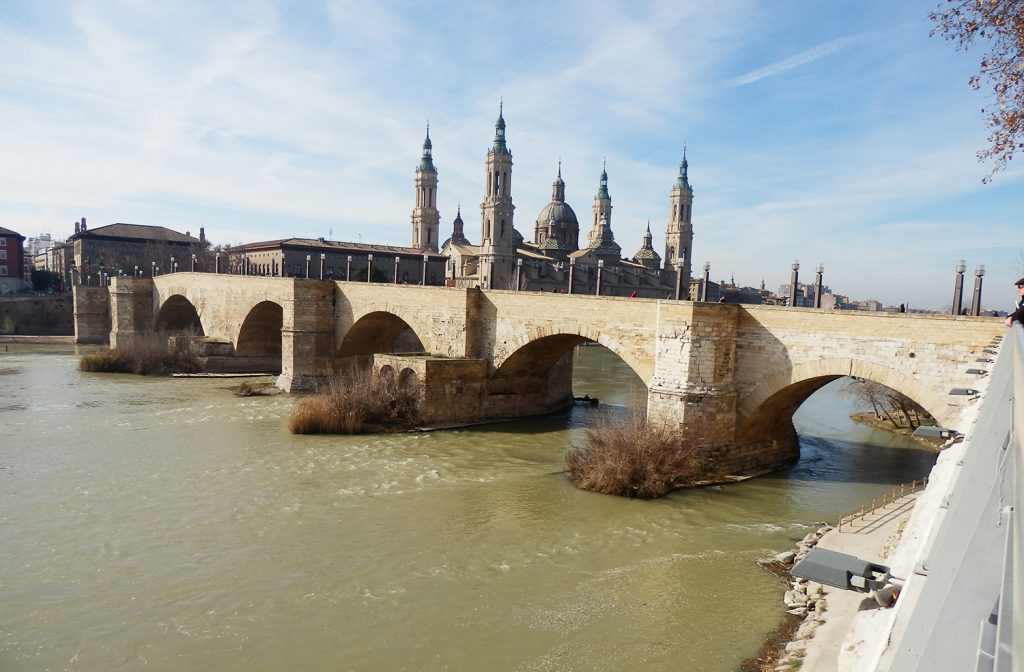
A trip to Zaragoza wouldn’t be complete without a stroll across the iconic Stone Bridge. This emblematic structure has connected both banks of the Ebro River since the Middle Ages.
Approaching it, you’ll find the two imposing stone lions, silent guardians of the city and harbingers of the beauty and history awaiting you.
Standing on this bridge is to dive into Zaragoza’s history, feel the pulse of the Ebro, its city, and enjoy the panoramic views unfolding before your eyes with the Basilica of Our Lady of the Pilar in the background.
A Dream Sunset on the Stone Bridge
The views from the Stone Bridge are simply spectacular, taking on a magical hue at sunset when the sky is painted in warm tones and the silhouette of the Basilica of Our Lady of the Pilar majestically contrasts against the horizon.
This time of day provides the perfect setting to capture an unforgettable photograph, a moment frozen in time that captures the deepest essence of Zaragoza.
The combination of the Ebro River flowing beneath your feet and the view of the imposing Basilica of the Pilar of Zaragoza makes this place a unique spot for photography lovers and those looking to take a unique visual souvenir of the city of Zaragoza.
A Bridge Laden with Meanings
The Stone Bridge represents more than just a street to cross the Ebro River; over the centuries, it has become an integral part of Zaragoza’s history.
Originally built in the XV century and rebuilt on multiple occasions, it has witnessed the continuous changes that have shaped the city, reflected in its other buildings.
Walking on its stones, “literally,” is to traverse a path that countless generations have shared, offering a unique vision of the passage and change of times.
More Than a Bridge, a Key Piece of Zaragoza
While there are other crossings over the Ebro, the Stone Bridge stands out for its legacy, cultural importance, and magnificent views.
Beyond being merely a means of passage, this emblematic bridge is a testimony to Zaragoza’s evolution and a symbol of the connection between its past and present.
The imposing lions located at the entrance add not only beauty but also represent the strength that defines the spirit of the city.
Tips for Capturing the Zaragozan Essence on the Stone Bridge
To capture the soul of the Stone Bridge and its surroundings, visit it at different times.
Morning light offers great serenity, while sunset brings color and drama. Experiment with angles and compositions that include both the river and the Basilica of the Pilar to portray the authentic magic of Zaragoza.
So whether in the early morning or at sunset, make sure to set aside some time during your visit to explore this unique bridge, let yourself be enveloped by its historical atmosphere, and of course, immortalize your passage through Zaragoza with a photograph featuring the Pilar in the background.
This gesture is not merely a visual capture but a ritual that connects you with the history, beauty, and spirit of a city whose identity is given through its bridges and waters.
Going for Tapas in El Tubo and Zaragoza’s Historic Center
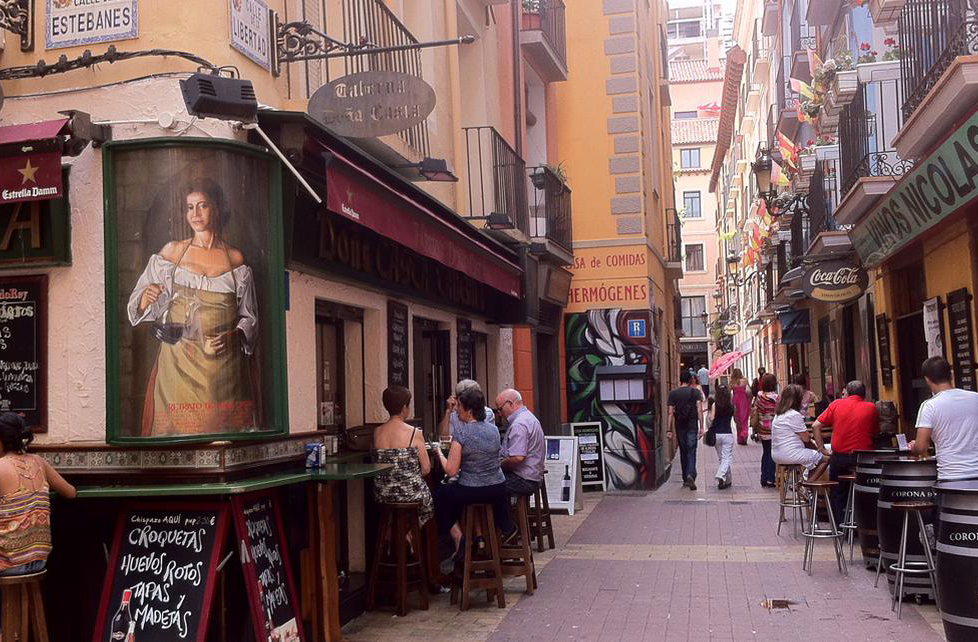
Exploring Zaragoza also means diving into its delicious gastronomic tradition, where the iconic streets of El Tubo form the pulsating heart of the city’s quintessential “tapas” culture.
Located in the historic center, this network of narrow streets becomes a mosaic of flavors, aromas, and colors, where the coexistence of old, new locals, and visitors translates into an unprecedented culinary experience.
Each corner, each bar, each tavern, has a story to tell through its dishes, making El Tubo a must-visit for any adventurous palate. You have to try it and visit!
A Gastronomic Journey Through El Tubo
The uniqueness of El Tubo lies in its ability to offer a wide range of tapas, each reflecting the richness of Aragonese and Spanish cuisine.
Among its streets, you’ll find emblematic establishments that have conquered the hearts and stomachs of those who visit, such as:
- Casa Lac: Founded in 1825, it is one of the oldest restaurants in Zaragoza and possibly in Spain.
You can’t miss its vegetable and borage tapas, dishes that combine local tradition with touches of innovation. - Bodegas Almau: Located at one of El Tubo’s liveliest corners, it is famous for its homemade croquettes, a true flavor explosion with each bite.
- El Champi: Renowned for its unique mushroom specialties, this place is an example of how a simple product can be transformed into a memorable culinary experience for a city.
- Taberna El Lince: Here, the spicy herring offers a unique contrast that tempts you to explore the limits of your palate, while the grilled sardines are a delight that pays homage to the flavors of the sea.
- Doña Casta: Famous for its creative croquettes, this site is oriented towards those seeking innovation in traditional cuisine.
- La Ternasca: Praised for reinventing and working with Aragonese cuisine, it offers tapas centered around ternasco, a typical meat of the region, presented in ingenious and delicious ways.
Complete Your Gastronomic Experience
El Tubo is a gastronomic reference in Zaragoza that invites you to be bold in your culinary choices. There, you can find everything from classic tapas to avant-garde creations; the variety is endless.
Dare to try it all. We’re sure it won’t disappoint.
Move and interact with the people of Zaragoza, this will not only enrich your experience but might also help you discover hidden gems outside El Tubo’s traditional tourist circuit.
The best time to visit El Tubo is during the less crowded hours, where you’ll find a more intimate and pleasant experience. Mornings and early afternoons before peak hour are ideal for those who prefer to avoid the crowds.
The gastronomic adventure that Zaragoza offers, especially in El Tubo and its surroundings, is a celebration of life, tradition, and innovation.
Each tapa, each dish, is a narrative of Aragon’s gastronomic history, served with pride and passion. So whether it’s your first visit or you’re returning for more, tapas in Zaragoza is an experience that always reveals something new, something exciting, something deliciously unforgettable, and you’ll love it.
Explore Roman Zaragoza: River Port, Baths, Theater, and Roman Forum
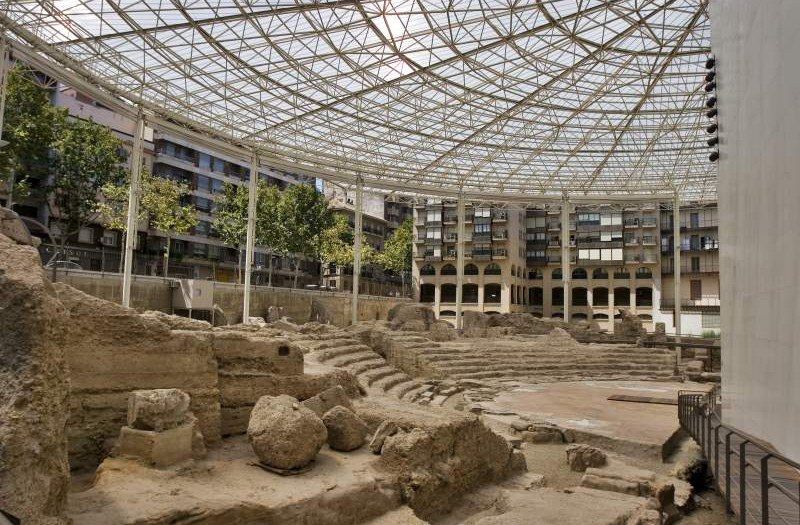
This is a journey everyone should undertake at least once in the capital, whether you’re from Zaragoza or just visiting.
Walking through the most emblematic places of the Roman era and diving into the history of this city is within reach in Zaragoza. The capital offers a journey to the past through its Roman architectural legacy. Are you going to miss it?
This itinerary will allow you to visit the main Roman remains without getting too exhausted. Starting at the walls that protected ancient Caesaraugusta and traversing the city to reach the museum located in the forum.
After spending some time discovering these places, we can delve into the museum dedicated to the river port and then the public baths to complete and enrich the visit. The Roman theater is very close, so it will be a perfect stop to end the tour.
Exploring Zaragoza is a journey back in time, especially when we uncover its impressive Roman legacy.
The Zaragoza of that time offers a unique opportunity to immerse ourselves in the ancient history of this city, which was one of the most prominent urban centers of the empire on the Iberian Peninsula.
From the river port to the baths, through the theater and the forum, each site brings us closer to the daily life, engineering, and culture of those who inhabited this land more than two thousand years ago.
A Tour Through the Roman Legacy
The River Port of Caesaraugusta
It’s a special enclave that allows us to understand the importance of the Ebro as a communication and trade route in antiquity, essential for the economy of that time.
Thanks to its visit, we can get an idea of how ships arrived loaded with goods and traded from the Aragonese capital.
The Imperial Baths of Zaragoza
Centers dedicated to the cult of the body and health, the baths were used not only for bathing but also for exercise, relaxation, and the exchange of ideas by Roman citizens.
Exploring the ruins of the majestic public baths of Caesaraugusta transports us to the past of Roman life and its dedication to physical and mental well-being.
The Amphitheater of Ancient Caesaraugusta
With capacity for thousands of spectators, the amphitheater demonstrates the Romans’ fascination with dramatic arts and combats, as well as their commitment to providing entertainment and cultural inspiration to the population of the Zaragozan capital.
Its modest remains have become a testimony to the architectural luxury and fondness for entertainment that characterized Roman imperial society.
The Agora of Prosperous Zaragoza
The nerve center of politics and the community, where matters affecting all its inhabitants were discussed. Walking through the ruins of the agora is to tread where the townspeople once walked in their daily chores and civic events.
Recommendations for Exploring the Caesaraugusta of the Zaragozan Past
Plan your visit in advance, although all the remains are nearby, dedicate time to each site for an enriching experience.
Take advantage of audio guides or guided tours to deepen your knowledge of each place. The complete route will elevate your walk to a fascinating educational immersion on Rome and its legacy.
Visit the museums dedicated to the theme. Zaragoza has exhibitions of archaeological findings in its nearby museums.
This visit will enrich and complete your route with visual details and narratives about life in the prosperous colony.
Ancient Rome in Zaragoza is not just a set of fallen ruins; it’s an open door to the past, an invitation to imagine the city in its imperial heyday.
Every street and every stone carry stories to discover, waiting to be unveiled. Thus, whether you’re a history lover, curious urban explorer, or simply someone eager to know the origins of Zaragoza, diving into its Roman legacy is an experience you won’t want to miss if you visit the city.
Visit the Goya Museum
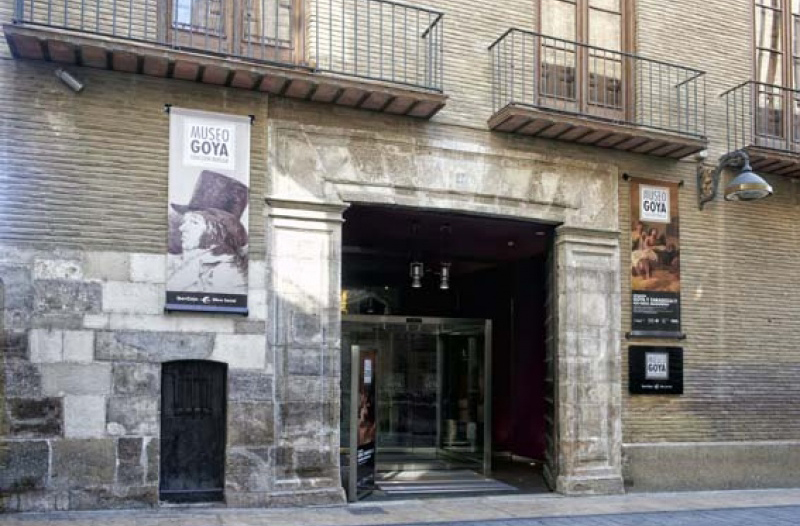
Immersing oneself in Zaragoza also means delving into the legacy of one of Spain’s most celebrated artists, Francisco de Goya, the Aragonese painter who revolutionized art with his unique vision and unparalleled technique.
For those interested in exploring the depth of his work and understanding the magnitude of his influence, a visit to the Goya Museum is an essential stop on the city’s cultural itinerary.
The Goya Museum not only pays homage to Aragon’s most famous artist but also offers an exceptional window into the evolution of Spanish and European art through his brushstrokes.
Located in the heart of Zaragoza, this museum houses one of the most comprehensive collections of Goya’s works, from his early years to his final creations, allowing tourists to follow the path of his artistic and personal evolution throughout his life.
A Matchless Collection of Francisco Goya in Zaragoza
The permanent collection of the Goya Museum contains vibrant paintings, ingenious prints, and exclusive drawings that span the artist’s broad career.
From his tapestry cartoons, which work with color and animation, to his critical etchings and the series of “The Caprices” and “The Disasters of War,” which expose his perspective on society, conflicts, and politics of his time.
Revealing Exhibitions on Goya
In addition to its permanent collection, the Goya Museum organizes temporary exhibitions that delve into various aspects of his work or explore his influence on other creators.
These exhibitions provide unique opportunities to admire pieces brought from other museums and private collections, thereby enriching the experience of visitors who come to view them.
Beyond Goya
A Building Full of History and Charm
The museum is located in a historical building that, in itself, warrants a visit.
Its sublime architecture and the atmosphere that surrounds it complement the experience of getting closer to Goya’s universe.
Tips for a Meaningful Visit
Here are some valuable tips to enjoy and learn more about Francisco Goya in Zaragoza.
Plan your visit in advance and check the museum’s website beforehand for information on temporary exhibitions, schedules, and fees. This will help you make the most of your visit.
Immerse yourself in the context by taking advantage of the educational resources the museum offers, such as audio guides or guided tours, to better understand the historical and artistic context of Goya’s works.
Explore the surroundings of the museum, which is located in an area rich in history and culture. Take time to explore the environment and discover other cultural treasures of Zaragoza.
Visiting the Goya Museum in Zaragoza is more than an artistic experience; it represents a journey through time into the life and work of one of history’s most influential painters.
Each displayed painting connects the viewer with the challenging times Goya lived through and allows understanding, through his brilliant eyes, the challenges of Spain and Europe during a time of conflict and war.
Do not miss the opportunity to learn more about Goya’s legacy.
Discover the Arab Legacy at the Aljafería Palace in Zaragoza
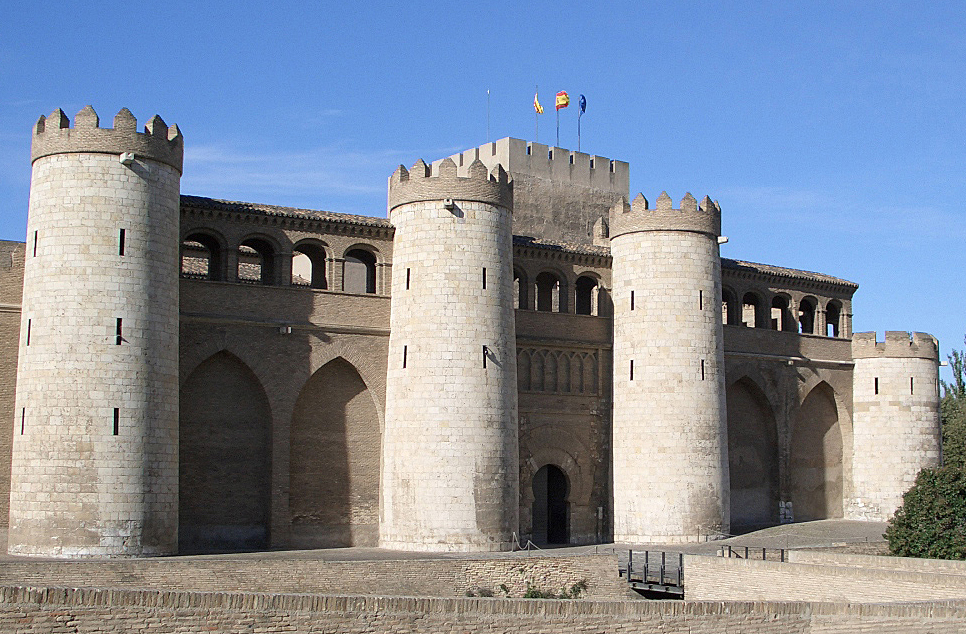
Zaragoza is a city with a rich history reflected in the diverse cultures that have left their mark over the centuries.
Among them, the Arab legacy stands out, primarily represented by the Aljafería Palace, the monument that best exemplifies the grandeur and sophistication of that period in the city.
This imposing palace, commissioned in the XII century by Al-Muqtadir, served as the royal residence for the kings of the Taifa of Zaragoza and showcases the golden age of the kingdom under Muslim rule.
The Arab Legacy Through the Centuries
The history of the Aljafería illustrates the coexistence of cultures that has lived and created the Zaragoza we know today, which has been projected over time.
Originally conceived as a symbol of Muslim power, the palace has undergone various transformations due to political vicissitudes, even serving as a military barracks and suffering significant damage in later political conflicts.
However, parts of that Arab splendor persist in its architecture, such as the semicircular arches, the Troubadour Tower, the Golden Hall, the mosque, or the courtyard of Santa Isabel.
Exploring the Past
A visit to the Aljafería is a journey through history via its Muslim architecture. Details such as the horseshoe arches, the intricate plasterwork, or the interlaced vaults reminisce about the Islamic era.
An Open Book
The palace narrates Zaragoza’s evolution over the centuries.
From its Muslim foundation through its role during the Reconquista and its use by the Catholic Monarchs, every corner evokes a stage in the city’s development. It’s an essential visit in the capital.
Tips for Your Tour
When visiting the Aljafería Palace in Zaragoza, you should allow a good amount of time to contemplate the rich historical and cultural wealth of the place leisurely.
Dedicate several hours to calmly discover all its corners. Participate in guided tours. Expert guides will provide details that will enrich your knowledge of the architecture and vicissitudes of the Aljafería.
Simple Beauty and Complex Wealth
Don’t just appreciate the exterior beauty of the Aljafería and its elaborate architectural details.
Its true essence lies in the hidden stories its walls enclose, tales of the cultural diversity of that time when they coexisted and merged to shape what Zaragoza is today.
This place is a perennial reminder of the richness that arises when different traditions share a common space and enrich each other mutually.
A Walk Through the Historic Central Market of Zaragoza
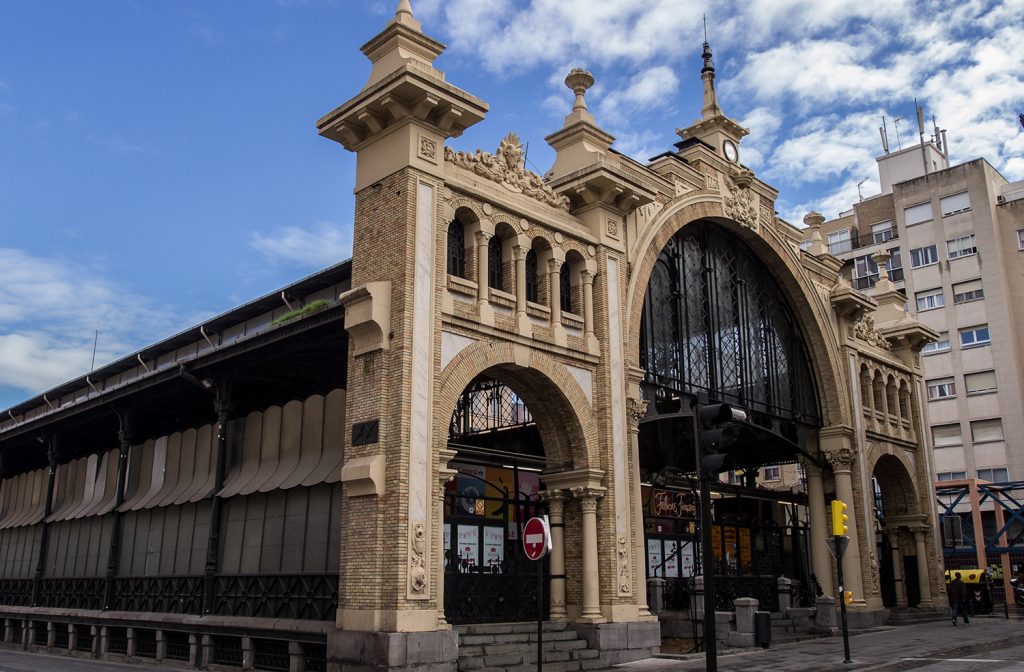
More than just a trading center, the iconic Central Market conveys the gastronomic soul of this city through its local products, stalls, and people.
Walking among its aisles is to delve into centuries of Aragonese commercial tradition, but it’s also a beautiful way to connect with the cultural roots that give Zaragoza its identity.
Its fruits, vegetables, meats, and fish are the result of fertile and cultivated land and the echo of flavors passed down from generation to generation.
Delighting the Senses with Authentic Aragon
The gastronomy of this region presents itself to visitors as a feast for the senses.
Its popular dishes, cheeses, wines, oils, and other delicacies are the living expression of the land that bore them.
Experiencing and tasting them is the best way to delve into the essence of Aragon and discover why its cuisine has earned well-deserved worldwide recognition.
Anyone wishing to know the true local culinary culture will find in its flavors a direct gateway to the heart of this Zaragozan city.
The Central Market houses a collection of regional flavors. Among its stalls, you’ll find seasonal fruits and vegetables, as well as iconic local sausages and cheeses, not to mention oils and wines.
Don’t miss the opportunity to taste a bellota ham from Teruel or explore the virtues of Campo de Borja and Cariñena wines.
Beyond basic foods, the Central Market of Zaragoza hides gourmet delights and specialties hard to find elsewhere, which we invite you to taste. We recommend seeking out black truffles at their peak, or top-quality olive oils whenever you have the chance.
Tips to Make the Most of Your Visit
The best time to visit the Central Market is early in the morning when the selection is broadest.
Don’t hesitate to chat with the shopkeepers and enjoy all the stories of their creations and products.
Take a break to admire the incredible iron architecture that houses the market.
Try before you buy, to choose what best suits your tastes.
Visiting the Central Market of Zaragoza is to immerse yourself in a world where the senses are sharpened, and the passion for food and local products comes to life.
This dynamic place where tradition and modernity converge offers both residents and tourists alike the chance to connect with the rich culinary history of the region and shop in an authentic way.
More than just a routine stop on your tourist itinerary, the Central Market invites you to experience the city in all its fullness through its vivid flavors, aromas, and colors, turning the excursion into a gastronomic adventure you’ll surely want to repeat in the future.
Touring the Zaragoza Expo 2008
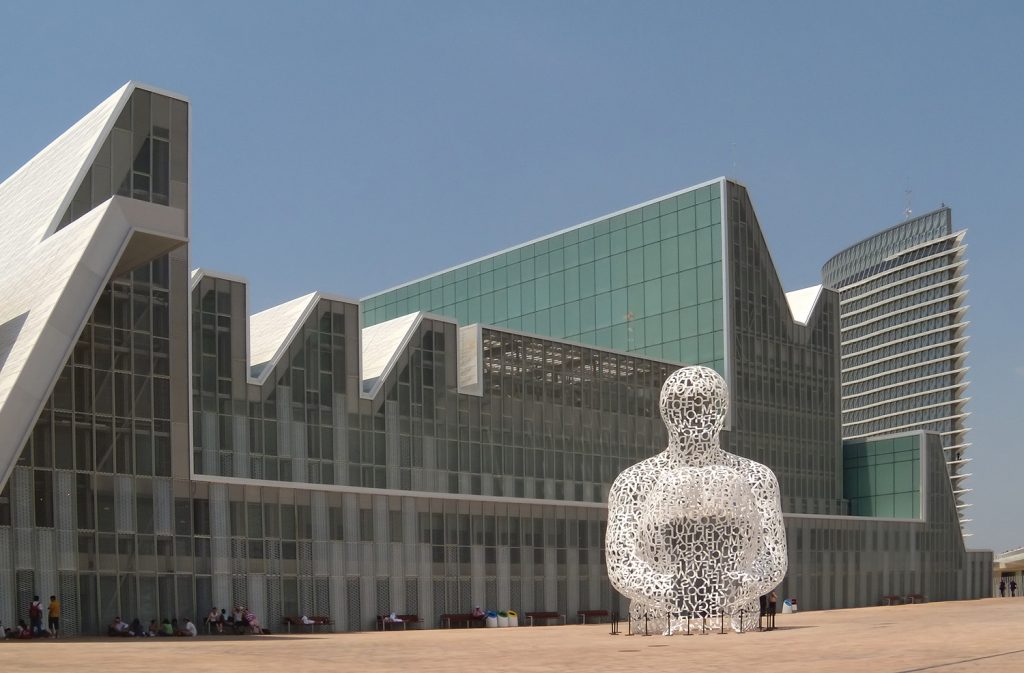
The Zaragoza Expo marked a before and after in the history of the city and its dynamics, leaving behind a legacy of innovation and architectural design that continues to fascinate both locals and tourists.
The buildings constructed then have remained as living examples of the culture of development and sustainability that marked the 2008 exhibition.
The central theme of the Expo, “Water and Sustainable Development,” was not only reflected in the talks and exhibitions but also in the impressive architecture created for the event.
Today, a walk through the Expo facilities in Zaragoza has become an exciting exploration of this heritage and water culture.
Touring the Zaragoza Expo
The Zaragoza Expo 2008 transformed an area of the city into a showcase of contemporary architecture, engineering, and art, where each building and structure were designed not only to amaze but also to inspire and work on water and sustainability.
Iconic architectural elements of the Expo, such as the Water Tower, the Bridge Pavilion, the Aragon Pavilion, the Third Millennium Bridge, and the Spain Pavilion, have become essential landmarks for understanding Zaragoza’s urban and cultural evolution.
Discover the Architectural Wonders of the Zaragoza Expo
The Water Tower of Zaragoza
This “skyscraper” stands out not only for its height and futuristic shape but also for housing the emblematic water sculpture, a piece that captures the essence of a water drop impacting a surface.
The tower symbolizes the central theme of the Expo and offers an incredible panorama of Zaragoza.
Designed by architect Zaha Hadid, this pedestrian bridge over the Ebro is a work of art in itself. Its organic and fluid shape evokes the dynamics of water, merging functionality, plasticity, and beauty in a harmonious way.
The Aragon Pavilion
This building is inspired by a wicker basket and reflects tradition and innovation through its unique and sustainable design, highlighting the importance of natural resources and local customs of Zaragoza.
The Artificial Beach of the Zaragoza Expo
During the summer, the artificial beach created for the Expo becomes an oasis for the city where visitors can cool off and enjoy recreational activities, keeping alive the atmosphere of celebration and community that characterized the event and continues to this day.
Walking among the facilities of the Zaragoza Expo is to witness the city’s capacity for innovation, looking towards the future without neglecting sustainability and water culture.
These amazing architectural elements not only remain as witnesses of the event but continue to inspire and educate on ways to interact harmoniously with the environment and add value without destroying the very essence of the city.
Thus, the Expo in Zaragoza remains not only in the memory of those who experienced it but also in the urban and cultural landscape of Zaragoza, inviting exploration, learning, and above all, valuing the precious resource that is water in our world and especially in our city.
Recommendations for Visiting the Expo in Zaragoza
For travelers venturing to discover this unique corner of Zaragoza, here are some suggestions that will make their visit an even more memorable experience:
- Plan your visit with current information. Before your tour, look for updated data on access to the Expo facilities, opening hours, and special events that might be happening. This will help you make the most of your time and fully enjoy the experience without unforeseen issues.
- Wear appropriate clothing and sun protection. Since much of the journey involves being outdoors, it’s advisable to wear comfortable clothes, suitable footwear for walking, and sun protection, especially during the summer months.
- Don’t miss the opportunity to ascend the water tower, where you can contemplate a superior view of Zaragoza and its river environment, appreciating details that you can only see from the heights.
- Bring your camera or mobile phone to immortalize the details of modern architecture like the bridge pavilion or the Aragon Pavilion, works that stand as emblems of the Aragonese locality.
- If you’re traveling with children, look for exhibitions and educational explanations in the various places you visit to enrich them with ideas about sustainability and the environment.
- If the weather is good, take advantage of the artificial beach to take a break and relax before continuing with the tour of the facilities. We’re waiting for you!

